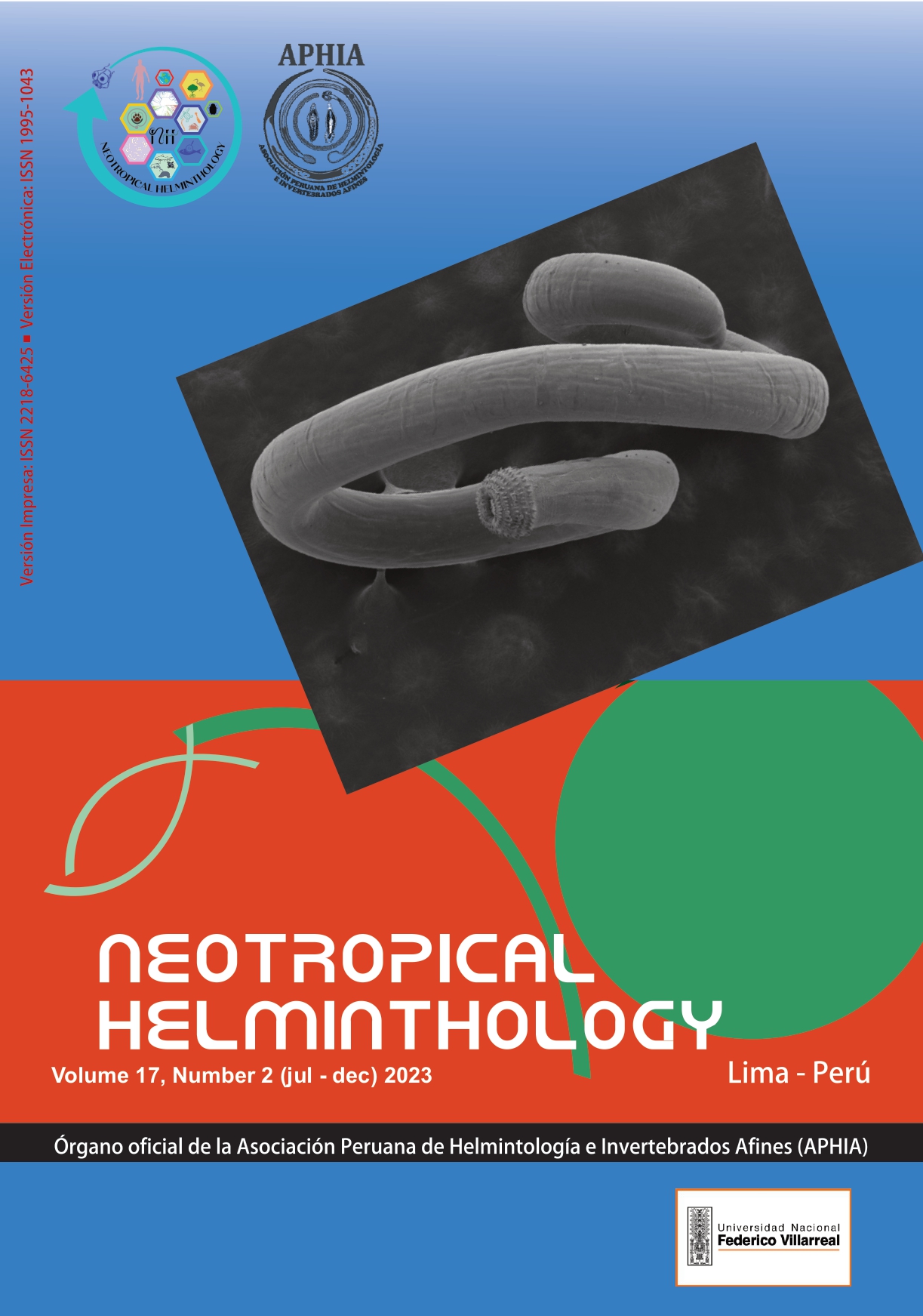Teleology of bioecotoximonitors in Aquatic ecotoxicology
DOI:
https://doi.org/10.24039/rnh20231721687Keywords:
applicability value, aquatic ecosystem, biological indicator of contamination, ecotoxicological prediction, logical relationshipAbstract
The search for biotools for the assessment of the environmental quality of aquatic ecosystems is a priority. Bioindicators and biomonitors are adequate for judgment, but not excellent in controlling multiple biases on ecotoxicological predictions. The objective was to describe the teleology of bioecotoximonitors in aquatic ecotoxicology. The teleology of bioecotoximonitors is based on a pyramid that guides the identification of ecosystem service importance, guidance on damage consequences, differential significance between one resource and another, as well as the need to apply assessments with bioecotoximonitors towards understanding the dynamics of ecosystem processes. The explanatory use towards the existential applicability of natural conditions, and in this case of the contamination of aquatic ecosystems, is what is relevant in the teleology of bioecotoximonitors. It is concluded that the teleology of bioecotoximonitors in aquatic ecotoxicology enables the measurement of the least amount of biases, the selective explanation of which would be essential in the applicational understanding.
Downloads
References
Argota, P.G. (2023). Necesidad social de protocolos ambientales con peces como biomonitores de metales pesados en ecotoxicología acuática. Neotropical Helminthology, 17, 85-89.
Bellino, A., Alfani, A., De Riso, L., Gregorio, R., Pellegrino, T., & Baldantoni, D. (2020). A promising cosmopolitan biomonitor of potentially toxic elements in freshwater ecosystems: concentration gradients in sensitive areas. Ecological Indicator, 109, 1-9.
Dalzochio, T., Simões, R., Airton, L., Santos de Souza, M., Prado, R.G.Z., Petry, I.E., Andriguetti, N.B., Silva, H., Gláucia, J., Günther, G., & Basso da Silva, L. (2017). Water quality parameters, biomarkers and metal bioaccumulation in native fish captured in the ilha river, southern brazil. Chemosphere, 189, 609-618.
Debén, S., Aboal, J.R., Giráldez, P., Varela, Z., & Fernández, J.A. (2019). Developing a biotechnological tool for monitoring water quality: in vitro clone culture of the aquatic moss Fontinalis antipyretica. Water, 11, 1-10.
Feyaerts, J., Henriksen, M.G., Vanheule, S. Myin-Germeys, I., & Sass, L.A. (2021). Delusions beyond beliefs: A critical overview of diagnostic, aetiological, and therapeutic schizophrenia research from a clinical-phenomenological perspective. Lancet Psychiatry, 8, 237-249.
Hu, L., Luo, D., Wang, L., Yu, M., Zhao, S., Wang, Y., Mei, S., & Zhang, G. (2021). Levels and profiles of persistent organic pollutants in breast milk in China and their potential health risks to breastfed infants: a review. Science of the Total Environment, 753, 1-15.
Keyes, A.A., McLaughlin, J.P., Barner, A.K., & Dee, L.E. (2021). An ecological network approach to predict ecosystem service vulnerability to species losses. Nature Communications, 12, 1-11.
Kumari, P., & Maiti, S.K. (2019). Health risk assessment of lead, mercury, and other metal (loid)s: A potential threat to the population consuming fish inhabiting, a lentic ecosystem in Steel City (Jamshedpur), India. Human and Ecological Risk Assessment, 25, 2174-2192.
Marin, V., Arranz, I., Grenouillet, G., & Chucherousset, J. (2023). Fish size spectrum as a complementary biomonitoring approach of freshwater ecosystems. Ecological Indicator, 146, 1-8.
Mathiesen, L., Buerki, T.T., Pastuschek, J., Aengenheister, L., & Knudsen, L.E. (2021). Fetal exposure to environmental chemicals; insights from placental perfusion studies. Placenta, 106, 58-66.
Morales, F. N., Rodríguez, M. A., Gelabert, R., & Flores, L. M. (2019). Parasites of fish Poecilia velifera and their potential as bioindicators of wetland restoration progress. Helgoland Marine Research, 73, 1-8.
Nunes, L.S., Lund, A.L., & Guiarrizzo, T. (2023). A multi-tissues comparison of biomarkers in Serrasalmus rhombeus (Teleostei: Serrasalmidae) and Prochilodus nigricans (Teleostei: Prochilodontidae) from two Amazonian rivers with distinct levels of pollution. Ecological Indicator, 147, 1-11.
Roberts, A.J., Wastell, C.A., & Polito, V. (2020). Teleology and the intentions of supernatural agents. Consciousness and Cognition, 80, 1-17.
Scott, M.J. (2022). Reasons things happen for a reason: An integrative theory of teleology. Perspectives on Psychological Science, 17, 452-464.
Published
How to Cite
Issue
Section
License

This work is licensed under a Creative Commons Attribution-NonCommercial-NoDerivatives 4.0 International License.
OBJETO: El AUTOR-CEDENTE transfiere de manera TOTAL Y SIN LIMITACIÓN alguna al CESIONARIO los derechos patrimoniales que le corresponden sobre la (s) obra(s) tituladas: xxxxxxxxxxxxxxxx, por el tiempo que establezca la ley internacional. En virtud de lo anterior, se entiende que el CESIONARIO adquiere el derecho de reproducción en todas sus modalidades, incluso para inclusión audiovisual; el derecho de transformación o adaptación, comunicación pública, traducción, distribución y, en general, cualquier tipo de explotación que de las obras se pueda realizar por cualquier medio conocido o por conocer en el territorio nacional o internacional.
REMUNERACIÓN: La cesión de los derechos patrimoniales de autor que mediante este contrato se hace será a título gratuito.
CONDICIONES Y LEGITIMIDAD DE LOS DERECHOS: El AUTOR-CEDENTE garantiza que es propietario integral de los derechos de explotación de la(s) obra(s) y en consecuencia garantiza que puede contratar y transferir los derechos aquí cedidos sin ningún tipo de limitación por no tener ningún tipo de gravamen, limitación o disposición. En todo caso, responderá por cualquier reclamo que en materia de derecho de autor se pueda presentar, exonerando de cualquier responsabilidad al CESIONARIO.
LICENCIA DE ACCESO ABIERTO: El AUTOR-CEDENTE autoriza que manuscrito publicado en La Revista Neotropical Helminthology permanece disponible para su consulta pública en el sitio web https://www.neotropicalhelminthology.com/ y en los diferentes sistemas de indexación y bases de datos en las que la revista tiene visibilidad, bajo la licencia Creative Commons, en la modalidad Reconocimiento-No comercial- Sin Trabajos derivados –aprobada en Perú, y por lo tanto son de acceso abierto. De ahí que los autores dan, sin derecho a retribución económica, a la Asociación Peruana de Helmintología e Invertebrados Afines (APHIA), los derechos de autor para la edición y reproducción a través de diferentes medios de difusión.


 Numero 2 Volumen 19 - 2025 (versión Anticipada)
Numero 2 Volumen 19 - 2025 (versión Anticipada)














































